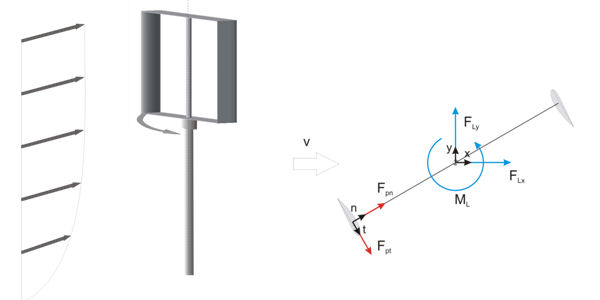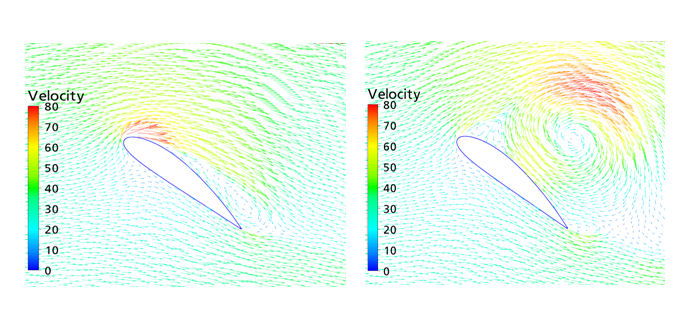

Numerical simulation methods using CFD enable the targeted investigation and quantification of flows, whereby the choice of physical model or boundary conditions may allow individual phenomena to be isolated better than in an experiment. In the present project, unsteady flows around aerofoils are investigated under dynamic variation of the angle of attack or the inflow velocity. The background of the project is the investigation and quantification of aerodynamic loads on vertical axis wind turbines (Darrieus turbines). The flow around these turbines is characterized, among other things, by a pronounced instationarity. Due to the kinematics of the aerofoil profiles, they experience a complex superposition of changes in the angle of attack and oscillating longitudinal movement. It is therefore not possible to design vertical wind turbines using conventional approaches (e.g. "actuator disc" principle). The project aims to present more reliable models for the design of vertical wind turbines. At the same time, the aim is to explore which performance increases are possible by utilizing the dynamic effects on the blade. The methods currently used are based on parameter models (multiple-streamtube model), which allow quantitative statements to be made about the performance of such turbines with comparatively little computational effort - albeit with quite large uncertainties due to the use of empirical data and numerous simplifications. In contrast, more detailed and possibly more reliable data can be obtained using CFD methods. However, the numerical effort involved is extremely high. These methods provide valuable data for analyzing the flow. These are used to improve the applicability and validity of parameter models and thus to be able to make better design and optimization statements.
The project is funded as part of the ProInno II program.
